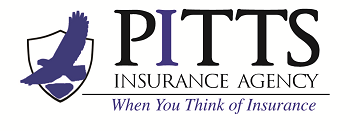Key Takeaways:
- Estate planning can be difficult to talk about—a 2021 Gallup poll showed that 64% of American adults working with a financial advisor have never discussed their estate plans with that advisor.
- A distribution of assets plan can help ease your anxiety and broach the difficult subject of legacy planning with a trusted financial professional.
- Familiarizing yourself with the 2 main types of trusts and how they are utilized can prepare you for conversations with your financial professional.
If you’ve put off estate planning due to the difficult nature of the topic, you are not alone. According to a 2021 Gallup poll, 64% of American adults working with a financial advisor have never discussed their estate plans with that advisor.
A common roadblock to having these conversations is the idea that estate planning is complex and possibly uncomfortable to talk about. It’s easy to think of estate planning as just wills, trusts and advanced directives, but it’s so much more. There are other tactics and techniques that can make a big difference in your legacy planning objectives, so it’s worth the effort to start the conversation with a financial professional as soon as you can.
The Importance of an Estate Plan
Estate planning is one of the most important topics to cover with a financial professional. The process of creating a plan for the distribution of assets at death can encompass:
- Limiting income and estate tax liabilities
- Determining who receives the assets — and when and how they’re received
- Facilitating timely payment of estate obligations and taxes
- Limiting costs of administration
Estate planning should be considered if you own property; it’s not just for the wealthy or those with complex situations. There are consequences of failing to plan—for example, if you pass away without a will, the State will use intestacy laws to determine the distribution of property. Unfortunately, this might not align with your intent. A proper plan can provide you a level of certainty and help safeguard your assets for the benefit of your heirs.
Beginning the Process
When implementing strategies for saving, you may want to consider these 3 steps with a financial professional to develop an effective plan for yourself:
- Identify estate transfer needs and goals – In this step, you should get an idea of where you are and where you want to go. The biggest considerations here are identifying beneficiaries, clearly understanding tax obligations, looking at estate assets, and knowing where to find liquidity in the estate. It’s also important in this step to consider future income, expenses, debts and needs.
- Develop strategies to reduce costs – Taxes are the largest potential expense your estate may have. These can include the federal gift tax, federal estate tax, generation-skipping transfer tax, state death and inheritance taxes, federal income taxes, and estate administration expenses. There are exclusions, deductions, and transfers that you should be aware of to minimize this burden. A financial professional can help you navigate these strategies.
- Pay for remaining expenses – This is where having the proper liquidity to pay estate expenses helps ensure your beneficiaries receive what you intend. Liquidity is the estate’s ability to pay taxes and other costs that arise after death (usually in the form of cash or cash alternatives). If your portfolio consists largely of real estate or business interests, the estate may be forced to sell a portion to pay for expenses when they are due. Knowing this, estate liquidity will likely be a primary objective for you and your financial professional. Having the right tools to meet the liquidity need is crucial. Annuities and life insurance with the right strategy behind them can accomplish this goal.
Using a Trust as Part of Your Estate Planning Strategy
Familiarizing yourself with the basic types of trusts and how they are utilized can prepare you for conversations with your financial professional about trust strategies and options. Here are some things you should know about trusts and their role in estate planning:
- There are two main types of trusts – revocable and irrevocable. Trusts can be used in many ways in estate planning, including helping your estate avoid probate, reducing estate taxes, and protecting yourself and your beneficiaries from creditors.
- Trusts do have drawbacks – depending on the type of trust, you may not receive any tax benefits or be able to easily make needed changes.
- A credit shelter trust is a common type of irrevocable trust used in estate planning – this type of trust can help married couples reduce or avoid estate taxes.
- Many assets can be used to fund a trust – nearly any type of asset can be used to fund a trust, including stocks, bonds, cash, mutual funds, real estate property, life insurance and annuities. Life insurance and annuities have become common ways to fund a trust in estate planning because they can offer your beneficiaries an immediate source of liquidity to provide potential financial security.
Estate planning can be complex, so consider working with a financial professional who can help you understand your options.
Read the original blog from our provider here.

